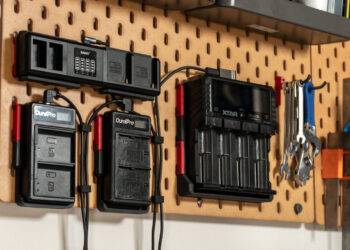Winter driving can be challenging, especially if you’re unprepared. Not only is there less daylight, but you may contend with fog, ice and snow.
With these factors in mind, it’s best to allow yourself a little more time than normal – as you may have to prepare the car before you set off, as well as drive at a more cautious speed than you normally in would in warmer and drier seasons.
If you are prepared, you shouldn’t have any issues, whether you need to drive 20 miles to work, or 200 miles to see your relatives. Remember to have your wits about you, don’t take a clear road for granted, and expect the unexpected around every corner.
Here are the best tips and advice to keep you safe on the roads in winter, ranging from vehicle checks, to driving tips following heavy rain or snow.
Preparation
First of all, plan your route. If the roads are covered in snow, larger roads will have a better chance of being well gritted, which may mean a slight detour.
The next best step is to leave sooner to allow extra time for your journeys. This gives you the chance to defrost the windows and remove any snow from your vehicle before driving, as well as driving more slowly than usual as you tackle slippery roads or encounter any traffic issues.
Do you have breakdown cover? Make sure you know where to find contact details should you require calling upon their services.
Grip
Check your tyres to see how much tread they have left and whether they remain in good condition – look for cracks or bulges in them and check the tyre pressures regularly to make sure they are at the recommended setting.
What about winter tyres?
If you have the money to buy a set and the space to store and switch between them over the course of the year, these are a worthy investment. These improve grip in cold weather conditions when it comes to both accelerating and braking, so this alone can be much more effective than simply having a vehicle with four-wheel drive.
However storing and swapping tyres is not always convenient for every household, so if you think you will require frequent tyres changes, you might be better trading in for a more capable car. Going for something better-suited to winter driving conditions doesn’t have to break the bank either. For instance, according to Parkers car valuations, you can get a Skoda Yeti from £2500 or an Audi A4 Quattro from £4,390 – so you can have the flexibility and practicality you need.
Vision
Keep this topped up with a mix of water and screenwash – the latter not only helps clear the muck but reduces the windscreen washer tank from freezing. Some are pre-mixed but you can follow the dilution instructions on the bottle.
Don’t forget to check the wipers themselves to make sure they clear the glass effectively and if it’s really cold you can slip them into a plastic bag to stop them from freezing. Don’t forget to check your wipers are off before switching on the ignition too.
When defrosting your car, make sure you clear your lights and numberplates from snow, ice or grime. Not only does this maintain your vision but allows other road users to see you as well.
Sunglasses are useful in the low sunlight and you’ll need to override your automatic headlight setting as they won’t necessarily detect foggy or snowy conditions.
Survival equipment?
You’ll need an ice scraper to see out of all your windows and to remove snow off the roof as well. Spare winter clothing is also useful in case you get stranded, including appropriate footwear in case you must abandon your car. Water and high energy food will prove invaluable as well.
Should you break down, a high-vis jacket improves your chances of being seen by others, while a torch, first aid kit and small snow shovel could come in handy.
On the move
The main thing to remember in wet weather and snowy conditions is to leave yourself extra room from vehicles ahead of you. Stopping distances can double very quickly in the rain, if not more. In the snow, this can be 10 times longer.
Reducing your speed also helps minimise that distance when you need to shed it as soon as possible.
Use dipped headlights to maximise your vision and your chances of being seen, while foglights should only be used when visibility drops to less than 100m.
What to look out for
Puddles and standing water may hide a huge pothole beneath it, while floodwater may not be worth the risk if it looks too deep, or the area is extensive. If you do go ahead, maintain a slow, steady speed as you drive through and test your brakes as soon as you are out of the water.
Beware of black ice and remember to drive smoothly to avoid any sudden movements to unsettle the car – this includes gentle steering, braking and accelerating inputs. If the brakes do lock up, release the pedal to try regain control.












